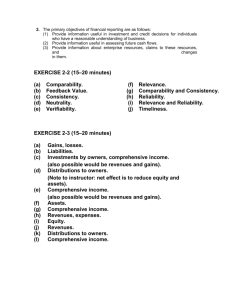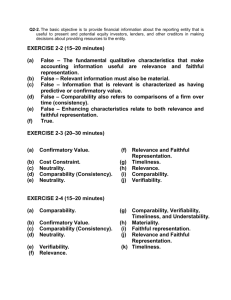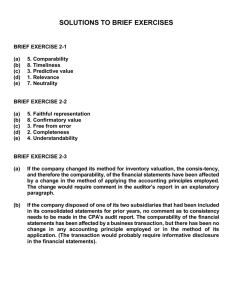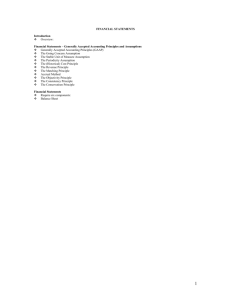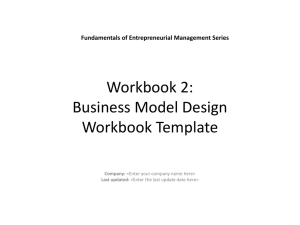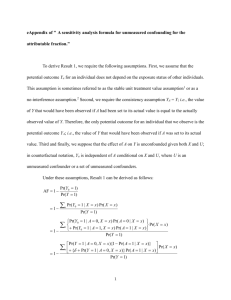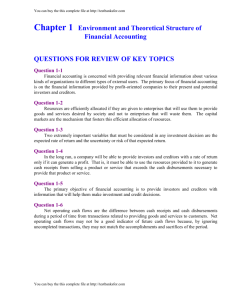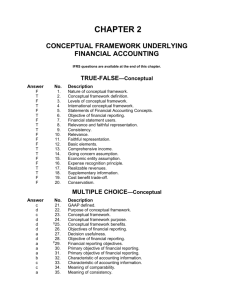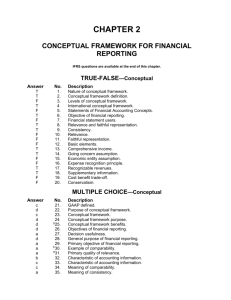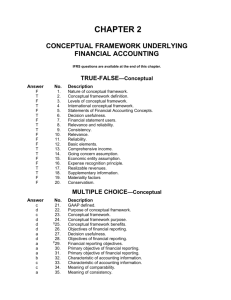HW Chap 1&2 Day 1
advertisement
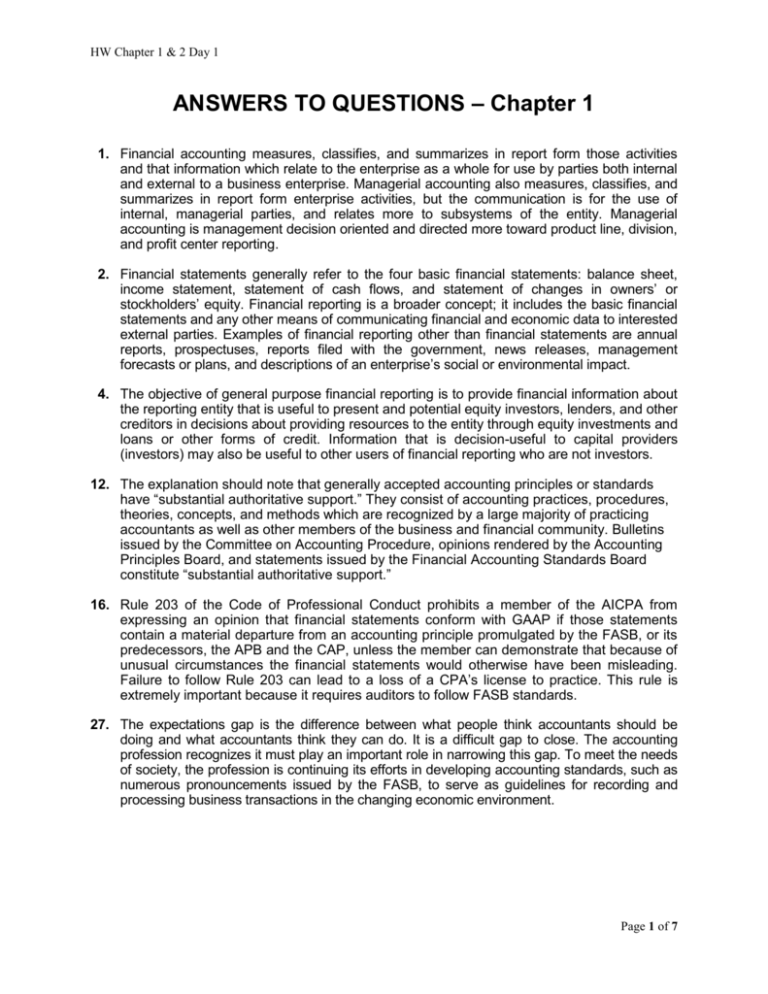
HW Chapter 1 & 2 Day 1 ANSWERS TO QUESTIONS – Chapter 1 1. Financial accounting measures, classifies, and summarizes in report form those activities and that information which relate to the enterprise as a whole for use by parties both internal and external to a business enterprise. Managerial accounting also measures, classifies, and summarizes in report form enterprise activities, but the communication is for the use of internal, managerial parties, and relates more to subsystems of the entity. Managerial accounting is management decision oriented and directed more toward product line, division, and profit center reporting. 2. Financial statements generally refer to the four basic financial statements: balance sheet, income statement, statement of cash flows, and statement of changes in owners’ or stockholders’ equity. Financial reporting is a broader concept; it includes the basic financial statements and any other means of communicating financial and economic data to interested external parties. Examples of financial reporting other than financial statements are annual reports, prospectuses, reports filed with the government, news releases, management forecasts or plans, and descriptions of an enterprise’s social or environmental impact. 4. The objective of general purpose financial reporting is to provide financial information about the reporting entity that is useful to present and potential equity investors, lenders, and other creditors in decisions about providing resources to the entity through equity investments and loans or other forms of credit. Information that is decision-useful to capital providers (investors) may also be useful to other users of financial reporting who are not investors. 12. The explanation should note that generally accepted accounting principles or standards have “substantial authoritative support.” They consist of accounting practices, procedures, theories, concepts, and methods which are recognized by a large majority of practicing accountants as well as other members of the business and financial community. Bulletins issued by the Committee on Accounting Procedure, opinions rendered by the Accounting Principles Board, and statements issued by the Financial Accounting Standards Board constitute “substantial authoritative support.” 16. Rule 203 of the Code of Professional Conduct prohibits a member of the AICPA from expressing an opinion that financial statements conform with GAAP if those statements contain a material departure from an accounting principle promulgated by the FASB, or its predecessors, the APB and the CAP, unless the member can demonstrate that because of unusual circumstances the financial statements would otherwise have been misleading. Failure to follow Rule 203 can lead to a loss of a CPA’s license to practice. This rule is extremely important because it requires auditors to follow FASB standards. 27. The expectations gap is the difference between what people think accountants should be doing and what accountants think they can do. It is a difficult gap to close. The accounting profession recognizes it must play an important role in narrowing this gap. To meet the needs of society, the profession is continuing its efforts in developing accounting standards, such as numerous pronouncements issued by the FASB, to serve as guidelines for recording and processing business transactions in the changing economic environment. Page 1 of 7 HW Chapter 1 & 2 Day 1 Questions Chapter 1 (Continued) 28. The following are some of the key provisions of the Sarbanes-Oxley Act: Establishes an oversight board for accounting practices. The Public Company Accounting Over-sight Board (PCAOB) has oversight and enforcement authority and establishes auditing, quality control, and independence standards and rules. Implements stronger independence rules for auditors. Audit partners, for example, are required to rotate every five years and auditors are prohibited from offering certain types of consulting services to corporate clients. Requires CEOs and CFOs to personally certify that financial statements and disclosures are accurate and complete and requires CEOs and CFOs to forfeit bonuses and profits when there is an accounting restatement. Requires audit committees to be comprised of independent members and members with finan-cial expertise. Requires codes of ethics for senior financial officers. In addition, Section 404 of the Sarbanes-Oxley Act requires public companies to attest to the effectiveness of their internal controls over financial reporting. CA 1-13 1. 2. 3. 4. (b), (e) (a) (c) (d) Page 2 of 7 HW Chapter 1 & 2 Day 1 ANSWERS TO QUESTIONS – Chapter 2 2. The basic objective is to provide financial information about the reporting entity that is useful to present and potential equity investors, lenders, and other creditors in making decisions about providing resources to the entity. 4. Relevance and faithful representation are the two primary qualities of useful accounting information. For information to be relevant, it should should be capable of making a difference in a decision by helping users to form predictions about the outcomes of past, present, and future events or to confirm or correct expectations. Faithful representation of a measure rests on whether the numbers and descriptions matched what really existed or happened. 8. Comparability facilitates comparisons between information about two different enterprises at a particular point in time. Consistency, a type of comparability, facilitates comparisons between information about the same enterprise at two different points in time. 12. The four basic assumptions that underlie the financial accounting structure are: (1) An economic entity assumption. (2) A going concern assumption. (3) A monetary unit assumption. (4) A periodicity assumption. 20. Revenues should be recognized when they are realized or realizable and earned. The most common time at which these two conditions are met is when the product or merchandise is delivered or services are rendered to customers. Therefore, revenue for Selane Eatery should be recognized at the time the luncheon is served. SOLUTIONS TO BRIEF EXERCISES – Chapter 2 BRIEF EXERCISE 2-2 (a) (b) (c) (d) (e) 5. Faithful representation 8. Confirmatory value 3. Free from error 2. Completeness 4. Understandability Page 3 of 7 HW Chapter 1 & 2 Day 1 BRIEF EXERCISE 2-7 (a) (b) (c) (d) Periodicity Monetary unit Going concern Economic entity SOLUTIONS TO EXERCISES EXERCISE 2-4 (15–20 minutes) (a) Comparability. (b) (c) (d) Confirmatory Value. Comparability (Consistency). Neutrality. (e) (f) Verifiability. Relevance. (g) Comparability, Verifiability, Timeliness, and Understability. (h) Materiality. (i) Faithful representation. (j) Relevance and Faithful Representation. (k) Timeliness. Page 4 of 7 HW Chapter 1 & 2 Day 1 EXERCISE 2-5 (15–20 minutes) (a) (b) (c) (d) (e) (f) (g) (h) (i) (j) (k) (l) Gains, losses. Liabilities. Investments by owners, comprehensive income. (also possible would be revenues and gains). Distributions to owners. (Note to instructor: net effect is to reduce equity and assets). Comprehensive income. (also possible would be revenues and gains). Assets. Comprehensive income. Revenues, expenses. Equity. Revenues. Distributions to owners. Comprehensive income. EXERCISE 2-6 (15–20 minutes) (a) (b) (c) (d) (e) (f) (g) (h) 7. 5. 8. 2. 1. 4. 10. 3. Expense recognition principle. Historical cost principle. Full disclosure principle. Going concern assumption. Economic entity assumption. Periodicity assumption. Industry practices. Monetary unit assumption. Page 5 of 7 HW Chapter 1 & 2 Day 1 EXERCISE 2-9 (a) This entry violates the economic entity assumption. This assumption in accounting indicates that economic activity can be identified with a particular unit of accountability. In this situation, the company erred by charging this cost to the wrong economic entity. (b) The historical cost principle indicates that assets and liabilities are accounted for on the basis of cost. If we were to select sales value, for example, we would have an extremely difficult time in attempting to establish a sales value for a given item without selling it. It should further be noted that the revenue recognition principle provides the answer to when revenue should be recognized. Revenue should be recognized when (1) realized or realizable and (2) earned. In this situation, an earnings process has definitely not taken place. (c) The company is too conservative in its accounting for this transaction. The expense recognition principle indicates that expenses should be allocated to the appropriate periods involved. In this case, there appears to be a high uncertainty that the company will have to pay. FASB Statement No. 5 requires that a loss should be accrued only (1) when it is probable that the company would lose the suit and (2) the amount of the loss can be reasonably estimated. (Note to instructor: The student will probably be unfamiliar with FASB Statement No. 5. The purpose of this question is to develop some decision framework when the probability of a future event must be assessed). (d) At the present time, accountants do not recognize price-level adjust-ments in the accounts. Hence, it is misleading to deviate from the historical cost principle because conjecture or opinion can take place. It should also be noted that depreciation is not so much a matter of valuation as it is a means of cost allocation. Assets are not depreciated on the basis of a decline in their fair market value, but are depreciated on the basis of systematic charges of expired costs against revenues. (Note to instructor: It might be called to the students’ attention that the FASB does encourage supplemental disclosure of price-level information). Page 6 of 7 HW Chapter 1 & 2 Day 1 EXERCISE 2-9 (continued) (e) Most accounting methods are based on the assumption that the busi-ness enterprise will have a long life. Acceptance of this assumption provides credibility to the historical cost principle, which would be of limited usefulness if liquidation were assumed. Only if we assume some permanence to the enterprise is the use of depreciation and amortization policies justifiable and appropriate. Therefore, it is incorrect to assume liquidation as Gonzales, Inc. has done in this situation. It should be noted that only where liquidation appears imminent is the going concern assumption inapplicable. (f) The answer to this situation is the same as (b). Page 7 of 7
